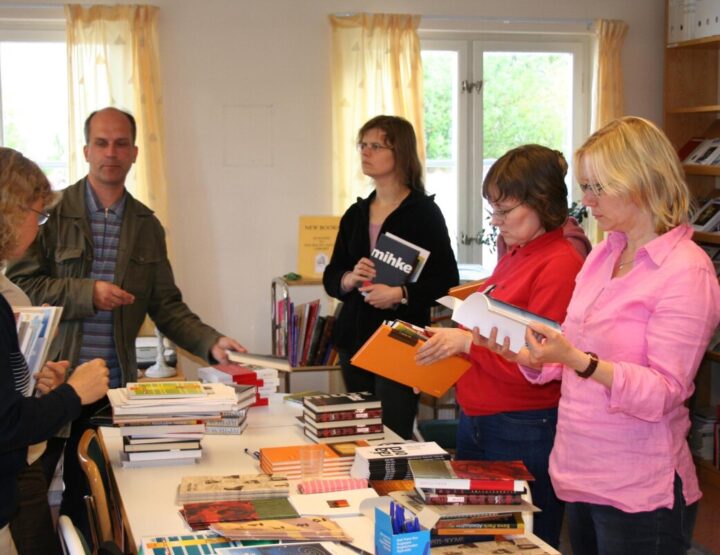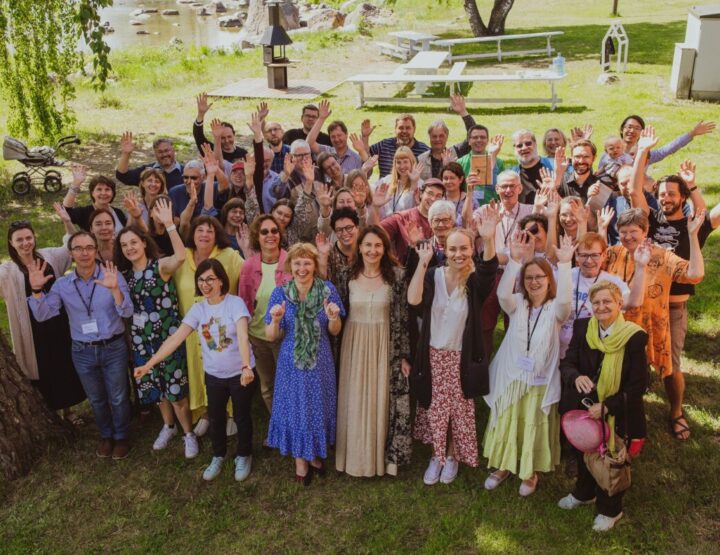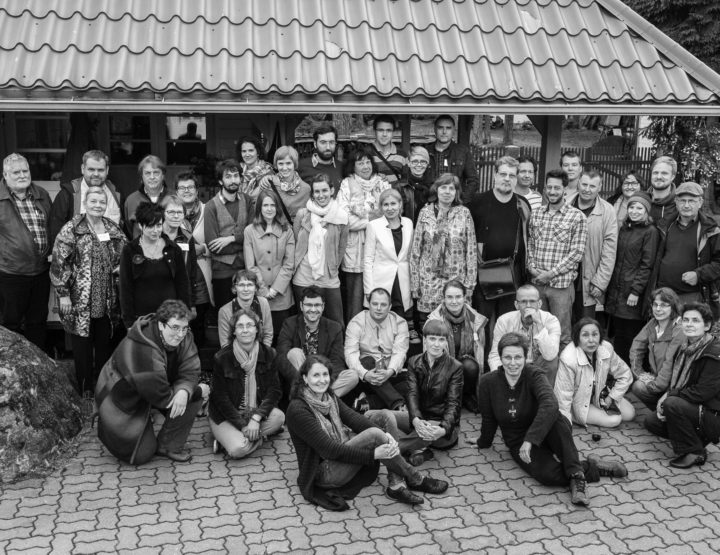Gotland lies more or less in the middle of the Baltic Sea. The “capital” and at the same time the only town is Visby. In the Middle Ages the town was an important trading centre for all the countries by the Baltic. Visby is now home also to the international meeting place for writers and translators – Baltic Centre for Writers and Translators. Between 28 November and 1 December Visby hosted a seminar on translating Baltic literatures, meant for old and new translators from the Nordic countries.
Translating Estonian, Latvian and Lithuanian literatures does not simply happen. The countries are small and fairly unknown for Nordic readers which makes it difficult to attract their attention. Thus people with a strong sense of mission are needed who have faith in translating Baltic literatures and are prepared to fight for it.
Participants included translators from Norway, Denmark, Sweden and Finland; the only country without a single participant was Iceland.
The seminar covered two main areas – one more general with common topics and problems for everybody, and the other more specific where the Estonian, Latvian and Lithuanian languages had separate work groups. The Estonian group was headed by Turid Farbregd, a prominent Norwegian translator, and it was Norway who stood out in the group of Estonian literature translators. For decades, Farbregd has been the only Norwegian to be seriously dealing with translating Estonian authors for the benefit of Norwegian readers. This time, however, there were as many as three young Norwegians at the seminar – Tor Tveite, Torstein Bach and Øyvind Rangøy, and in addition the experienced translator Maarja Talgre from Sweden.
The key text was the fifth chapter of Andrus Kivirähk’s novel The Old Barny (Rehepapp). The title and protagonist of this significant novel, the Old Barny himself whose roots are deep in Estonian culture, pose a problem and a challenge to the translators.
Five translations were presented at the seminar – four in Norwegian and one in Swedish – and the workshop undertook to compare and analyse them. This process as such always ignites fascinating discussions and in no doubt useful both for experienced and young translators.
Interest in Estonian language and literature was not limited to the Estonian group – other Estonian language speakers attended the workshop as well; one young Norwegian man who translates from Latvian constituted a “reserve member” of the Estonian group.
The seminar tackled more general topics and problems, including the usage of marginal notes in the translation of fiction. Trying to convey the details of another culture, the translator is often tempted to explain and make things clear to the reader. Scandinavian publishers (and readers?), on the other hand, find marginal notes and footnotes disturbing and distracting, and thus most translators try to avoid them. This sometimes proves very difficult. It was good to hear people’s opinions of whether or how much such notes should be used or avoided, so that the contents of the book would still be understandable. The offered possibilities included rephrasing, explanations in the text, and certain “keys” in introductions. Another relevant topic was the different traditions in using various notes, e.g. the Soviet type over-explaining in order to guarantee the “correct” understanding of the text.
Contacts with the publisher is another vital topic for all translators, especially for those who, more often than not, have to struggle to find anyone at all prepared to publish their chosen books. Here, Tapani Ritamäki from the Finnish-Swedish Österströms publishing house shared his experience. He gave an overview of publishing processes and customs, what to do and what not to do. Ritamäki offered no “miracle remedies”, but it is always useful to know about the publishers’ preferences and strategies.
When the Latvian Baiba Kangere finally arrived – her boat failed to set out – she read her paper titled “Word and Notion”, which she called “an anti-dictionary speech”. Kangere thus reminded the others of the perils of thinking as if there was a one-to-one correspondence between words, notions and meanings in different languages.
Should the translators focus on contemporary literature or turn to the classics of the Baltic literature? This was discussed towards the end of the seminar. As a rule, both readers and publishers seem to prefer new, topical books. It was agreed that it is indeed wiser to start with modern literature hoping this will attract more attention to the classics in the longer perspective.
What books come out in German translation? It transpired that the books in German are mostly those that should be attractive also to the Nordic publishers. It would be much easier to get an independent opinion. Experts who read the original language are far and few between. It is a standing joke that people keen on promoting Baltic literatures in the Nordic countries should support their publication in German.
The Visby seminar tackled essential problems, but was also an excellent place to find new contacts. There are not too many translators of the Baltic literatures in the Nordic countries, which makes it vital to come together every now and then to exchange experience and get to know one another. This might well prove useful.
© ELM no 16, spring 2003



